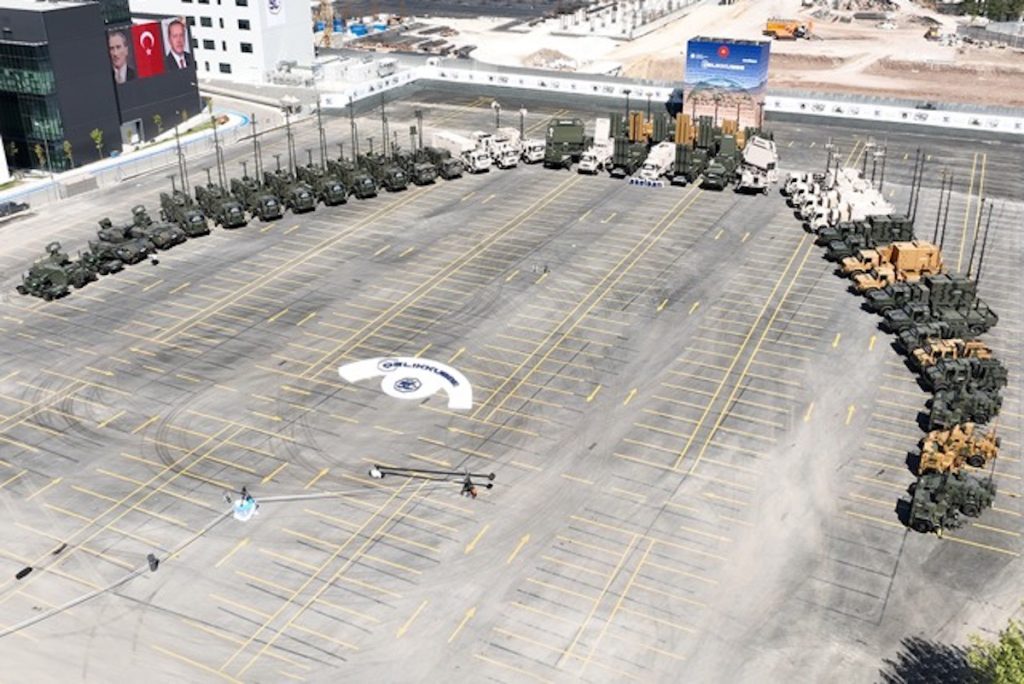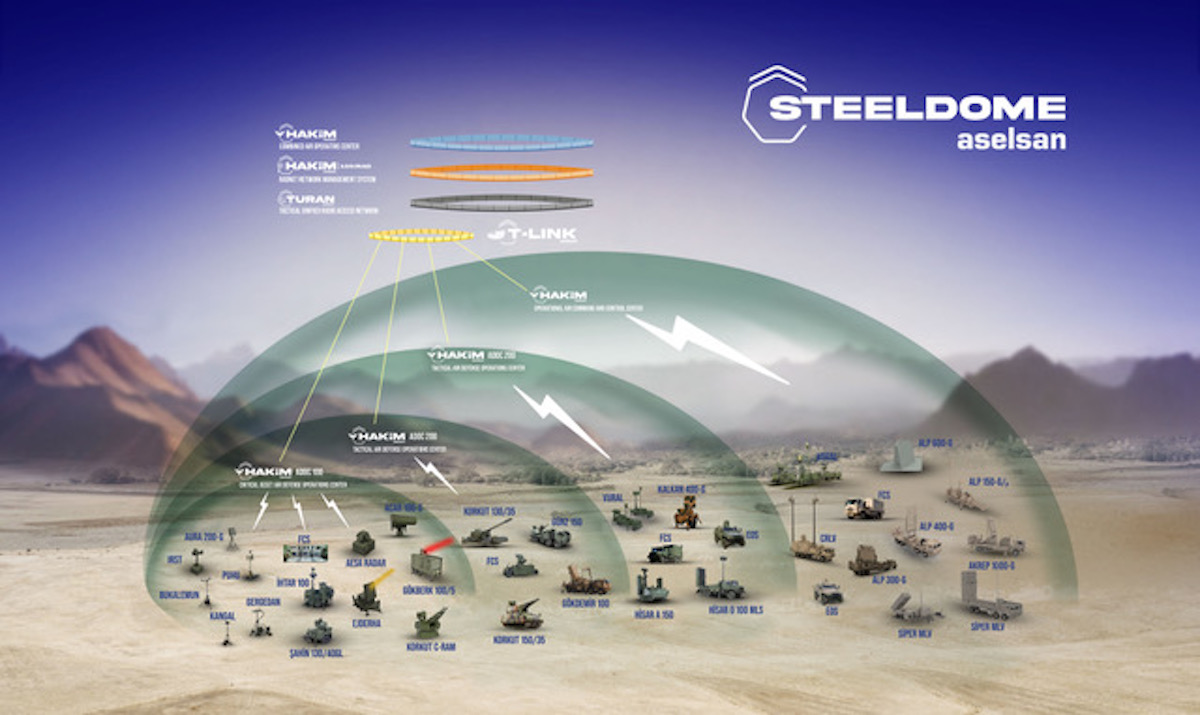Steel Dome: Turkiye’s Network-Centric Shield For Tomorrow’s Airspace
MODERN air defence is no longer defined by a single interceptor or radar—it is defined by how well systems communicate, coordinate, and adapt in real time. With airspace becoming increasingly contested by drones, cruise missiles, and hypersonic weapons, the answer lies in fully integrated, multi- domain defence networks. Türkiye’s Steel Dome project developed under the leadership of ASELSAN, in partnership with ROKETSAN and TÜBİTAK SAGE represents one of the most advanced examples of this new generation of air defence architecture.
Steel Dome is Türkiye’s indigenous multilayered air defence system, designed to create an integrated and intelligent shield over national airspace. The system combines radar, electronic warfare, command and control, and interceptor technologies within a single, network- centric structure. Officially designated by the Turkish government as “Steel Dome,” the initiative is being deployed nationwide, with new components entering the inventory each year.
At its core, Steel Dome integrates all radars, sensors, and air defence effectors into a single, encrypted, and resilient network. Built on a military-grade 5G communication backbone, this network enables low-latency, electronic warfare-resistant data exchange across all nodes of the defence grid. The result is a continuously updated, real-time air picture that connects every radar and launcher to a unified command structure— ensuring synchronized engagement across the entire system.

This vision is built upon three main pillars: sensors, command and control, and effectors, all operating under ASELSAN’s technological leadership.
Sensor Layer: Situational Awareness in Every Domain
Steel Dome’s sensor layer brings together a comprehensive suite of surveillance assets, including long-range early warning radars, infrared search and track (IRST) systems, and electronic support systems. Among these, the ALP radar family, with a detection range of up to 650 kilometers, provides long-range situational awareness and early threat identification. These sensors form the foundation of the system’s distributed awareness, feeding continuous data into the command network for precise decision-making.
Command and Control: The Intelligence Core
The center backbone of Steel Dome is HAKİM, ASELSAN’s AI-based command and control system. Acting as the “brain” of the architecture, HAKİM integrates all sensors and effectors into a single operational picture. It uses artificial intelligence and big data analytics to evaluate threats, assign interceptors, and execute coordinated responses in real time. This AI-supported network ensures fast, accurate, and layered decision-making, allowing simultaneous engagements across multiple threat vectors—from drones and cruise missiles to long range and high- altitude air targets.
Effector Layer: Layered Engagement from Very Short to Strategic Ranges, and Low to High Altitudes
Steel Dome’s effector portfolio covers the full spectrum of aerial threats. At the upper tier, SİPER, Türkiye’s long-range air defence system, has already entered service with the Turkish Armed Forces, representing the highest level of interception capability. In the mid-tier, HİSAR systems deliver medium- range protection, while KORKUT provides very short-range protection against various air targets. Complementing these, İHTAR and ŞAHİN systems address the growing challenge of drone swarms, ensuring close area airspace security. Together, these effectors form the interception backbone of Türkiye’s multi-layered protection network.
At the backbone of the entire architecture lies TURAN tactical unified radio access network that connects all command centers, sensors, and effectors through secure and high-speed communication channels. This structure supports the plug-and-play integration of new systems in dynamic warfare environment without redesigning the entire framework.
The Steel Dome project is also engineered with resilience in mind. Centralized frequency management, AI- based spectrum control, and advanced cybersecurity protocols ensure operational continuity under heavy electronic and cyber- attack. This design philosophy positions Steel Dome not only as a layered missile and defence architecture but also as a robust digital fortress capable of sustaining operations in the electromagnetic domain.
As the architecture expands, Türkiye continues to strengthen its national defence ecosystem through large-scale deliveries. In 2025, continuing the process from past deliveries, additional 47 key components of the Steel Dome system—worth $460 million—were handed over to the Turkish Armed Forces. These included SİPER, HİSAR, KORKUT, ALP, and PUHU systems, forming the foundation of the country’s layered defence capability.
ASELSAN’s ongoing investments, exceeding $600 million, are accelerating production capacity and the deployment of new systems. New facilities dedicated to integrated air defence manufacturing are under construction, supporting Türkiye’s vision of achieving a fully sovereign and future-ready air and missile defence architecture.
In an age where the speed, variety, and sophistication of aerial threats continue to evolve, Steel Dome stands as a proof of Türkiye’s technological maturity and strategic foresight. It represents not just a collection of systems, but a cohesive, intelligent, and resilient national shield— ready to safeguard the skies of tomorrow.


